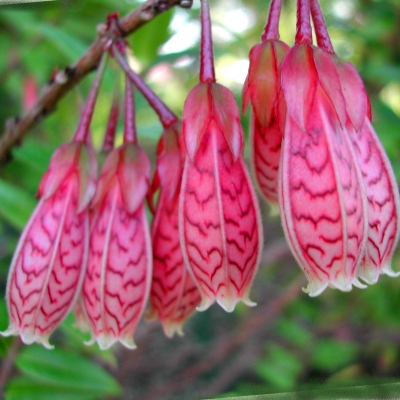Growing tips
Soil -- Agapetes can adapt to
many soils, but it prefers a loose, well-draining soil mix that is slightly
acidic. A typical soil mix is one part potting soil, one part peat moss,
and two parts perlite. An alternative is to use equal parts of coco fiber and
perlite, with some slow-release fertilizer mixed in. Don't add lime to your mix. Light - Agapetes likes part sun, so that it gets about 40-50% sun, with protection from strong afternoon sun. Your plant was grown in filtered light, so please acclimate it to direct sun slowly after transplanting. Start it in 80% shade, and increase the sun by about 10% per week. It doesn't need lots of sun to thrive - just bright light. Watering -- Aim to keep the soil evenly moist most of the time - but not soggy. Avoid letting it dry out completely. Don't let the pot sit in a tray of water. If your tap water is very high in minerals ("hard water"),
you may need to use bottled water or rainwater. If that's not practical for you, use a fertilizer for acid-loving plants, to counteract the alkalinity of
the tap water. Climate -- Agapetes prefers mild temperatures. In warmer climates, you may need to keep the pot shaded, perhaps by placing inside a second pot made of clay. It can probably survive several degrees of frost, but it's happiest with temperatures above 40°F (4°C). I recommend protecting it from frost. Indoors, over about 40% humidity is best. If you have any questions or problems, please contact me. Enjoy your plant! - Jeff Strange Wonderful Things
|
|||||||||


